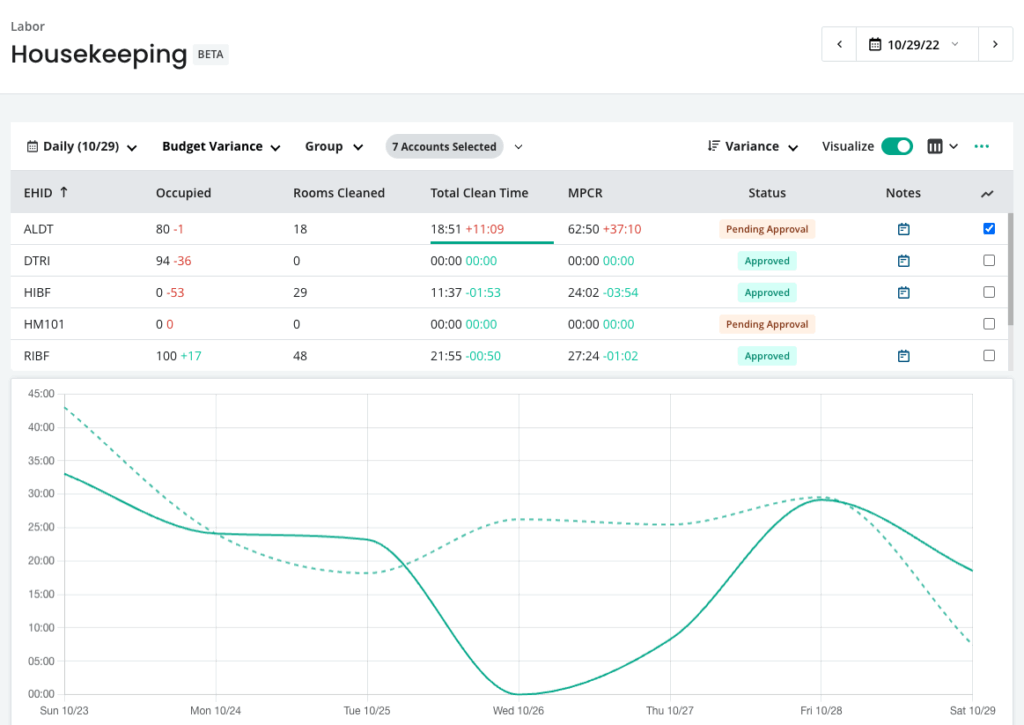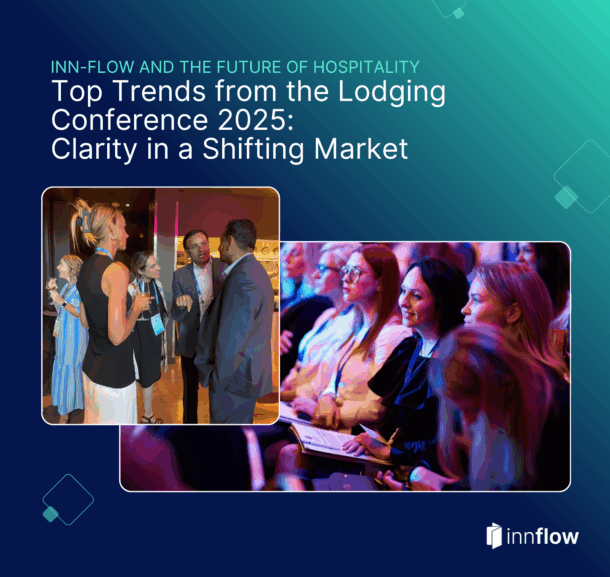If you manage a hotel, you already know the story. One week you’re fully staffed, the next you’re scrambling to cover shifts.
According to the Gem Journal, the average hotel turnover rate can climb as high as 74% in hospitality. This revolving door can leave general managers (GMs) in a constant cycle of recruiting, onboarding, and retraining.
The reality on the ground, according to the American Hotel and Lodging Association (AHLA), is that 65% of hotels report they can’t find or keep enough staff. The fallout? Higher labor costs, overworked teams, and service that suffers.

For guests, that can mean longer wait times, missed details, and an overall dip in experience. It’s a cycle that drains resources, frustrates managers, and hurts revenue.
The good news is that hotels don’t have to accept high turnover as “just the way it is.” With better scheduling and access to insights, general managers can proactively meet labor challenges to improve staff satisfaction. Accessing Business Intelligence (BI) tools gives GMs the ability to:
- Spot overtime risks
- See patterns across roles and shifts
- Act before burnout and frustration push people out the door
The result is a more stable workforce, better guest experiences, and a healthier bottom line.
The Cost of Labor Turnover
Hotel employee turnover is one of the most expensive challenges (and one of the biggest headaches) hotels face. Every time an employee leaves, the ripple effect stretches beyond the empty position. Direct financial hits include:
- Recruitment costs: Advertising jobs, interviewing, and background checks all add up.
- Onboarding and training: Managers and seasoned staff spend valuable hours getting new hires up to speed.
- Lost productivity: New employees typically take weeks (sometimes months) to match the output of experienced staff.
And then there’s the pressure of regulation and rising wages. For example, the Los Angeles Times reported hotel workers are now entitled to $30/hour minimum wage, along with mandatory training and certification requirements. For GMs and owners, this reshapes multi-year budgeting and labor planning.
When turnover combines with rising costs, hotels feel the squeeze. That’s why smarter, data-driven approaches to retention are essential.
Using Data to Drive Labor Retention
With the right BI platform, general managers gain a clear view of what’s really happening behind the scenes … and the power to act before small issues become costly crises.
Hotel business intelligence solutions deliver actionable insights that transform people management from reactive to proactive. Here are a few ways in which data makes a measurable difference:
- Predicting staffing needs. By aligning occupancy and seasonal patterns with historical labor data, hotels can plan schedules in advance, reduce overtime, and prevent burnout.
- Tracking labor costs vs budget: Daily or weekly reports show when wage spending is creeping above forecast, so managers have a chance to course-correct before the month ends in red.
- Identifying performance trends: Real-time labor analytics highlight overtime risks, attendance issues, and departmental variances before they impact the bottom line.

These benefits are why hotel owners are investing in BI and mobile solutions in 2025 and beyond.
How Accounting Integration Supports Labor Strategy
Labor retention directly ties to how hotels manage their finances. When labor management and accounting are integrated, hotels gain:
- Labor cost as a percentage of revenue: When labor data flows directly into accounting, managers see labor cost as a percentage of revenue in real-time- not weeks later – allowing quick adjustments before budgets slip.
- Data-driven forecasting: Integrating labor and accounting aligns staffing plans with real occupancy and revenue trends, helping hotels schedule precisely to demand and reduce overtime.
- Daily P&L alignment: Automated updates keep actual labor costs synced with the budget, giving owners and operators a live view of performance instead of waiting for month-end reports.
By connecting accounting and labor planning in one place, GMs gain the confidence to make faster, smarter decisions that keep costs in check and employees supported.
Labor Cost Optimization Strategies
Labor is one of the largest expenses in any hotel, but it doesn’t have to be a runaway cost. When managers keep an eye on the numbers, they can make adjustments that keep budgets and people in balance.
Here’s how hotels can optimize staffing, protect team well-being, and link labor costs to profitability:
- Staffing levels shift with demand: Forecasted occupancy and guest patterns guide smarter scheduling, so you’re never caught over- or under-staffed.
- Schedules that prevent burnout: Data highlights where workloads are uneven, allowing managers to spread shifts fairly and reduce turnover.
- Labor costs tracked against key performance indicators (KPIs): Linking payroll to metrics like gross operating profit (GOP) and revenue per available room (RevPAR) reveals the true impact of staffing decisions on profitability.
And in markets with rising regulations (like Los Angeles’s $30/hour wage plus healthcare and certification requirements that we mentioned earlier), proactive payroll planning is crucial. With the right insights, hotels can stay compliant while still protecting margins and supporting their teams.
Turning Insights into Action
The best data is only valuable if it drives change. By leveraging hotel industry business intelligence systems, managers can move from information to impact, reducing the hotel employee turnover rate and boosting overall performance.
Here’s how to put insights into action:
- Fine-tune scheduling: Match labor resources to guest demand in real time, avoiding both understaffing and costly overtime.
- Align labor with profitability: Monitor how staffing decisions affect KPIs like GOP and RevPAR to balance service quality with financial health.
- Plan ahead with predictive data: Use occupancy forecasts and seasonal trends to build proactive schedules that reduce stress on employees.
The Bottom Line: From Data to Decisions that Drive Retention
Labor challenges aren’t new — but the tools to solve them have evolved. When hotels connect their labor, accounting, and business intelligence systems, they gain the visibility to make decisions that balance cost control with employee well-being.
Real-time insights replace guesswork, turning scheduling into a strategic advantage. Teams stay balanced, compliance risks shrink, and managers can finally move from reacting to anticipating. The result? Less turnover, stronger guest satisfaction, and healthier profit margins.
Don’t wait until turnover becomes a crisis. See how Inn-Flow’s Business Intelligence can help your hotel optimize labor and reduce turnover. Schedule a demo today.
